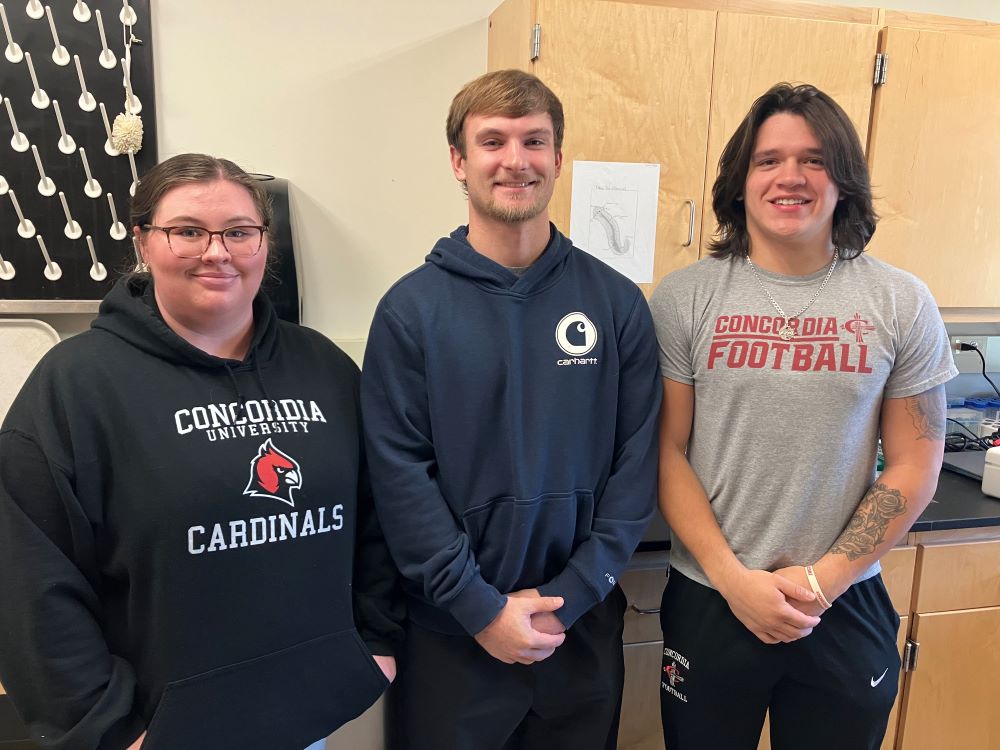
What’s in a worm?
Regeneration is a concept that many people likely don’t think about on a daily basis. However, a few students at Concordia University Ann Arbor have started getting a handle on it through new research on planarians—flatworms with the amazing capacity to regenerate their entire bodies after injury.
What are Planarians?
Planarians are small but mighty creatures that live in different environments around the world. Throughout their lives in either aquatic or terrestrial habitats, they avoid predators by using light-sensitive photoreceptors that function as simplified eyes. In the case that they are injured, all is not lost. Adult planarians contain stem cells, which are unspecified cells with the unique ability to replace any other cells that are lost in the body, whether in the nervous tissue, the digestive tract, or the photoreceptors. The incredible thing is that they can all be replaced at once—for instance, if a planarian is cut in half, each half will completely regrow the missing parts, whether head or tail!
This ability of planarians, combined with their relatively simple maintenance, make them a very popular choice to study in the laboratory, and that is exactly what CUAA students James Carpenter, Heath Flower, and Olivia McComas have been working on this year. In addition to their busy schedules in the classroom and various extracurricular activities, these students have taken on the task of maintaining planarians in the lab and developing new and exciting projects relevant to their classroom and career interests.
SURF’s Up! Nitric Oxide in Planarians
Over the summer, James and Olivia were funded through a CUWAA Summer Undergraduate Research Fellowship (SURF) to research the effects of nitric oxide on planarian behavior and regeneration. Nitric oxide (NO) is a gas that acts as a biological messenger in several physiological processes, such as the immune system and muscle function.
This project was a collaborative effort with Dr. Alex Ketchum, one of CUAA’s chemistry professors who previously worked on medical applications of nitric oxide. Through their work, James, Olivia, and Dr. Ketchum developed a protocol to leach nitric oxide from a hardened polymer into the planarians’ water. Behavioral and regeneration studies are now underway to determine how this small molecule may play a role in tissue growth, light sensitivity, and other behaviors, and even the planarian immune system.
Planarian Perfusion
Another project, developed by Heath Flower, aims to study the effect of cardioplegic solutions on muscle cells. The cardioplegic solution is regularly used in perfusion to temporarily stop the heart during heart surgery. The high potassium concentration of cardioplegic solution causes a visible reaction in the environment-sensitive planarians—they completely stop moving! This study, therefore, aims to determine if muscle inhibition impedes regeneration or if muscle regeneration is inhibited altogether.
While planarians seem small and insignificant, they are truly amazing little creatures that have greatly informed the biological sciences. Our studies are just a few that are seeking to harness the planarian’s unmatched potential for regeneration to understand more about how our own tissues and cells respond to injury and heal over time.
Want in?
To learn more about the program that our School of Arts and Sciences offers, click below.